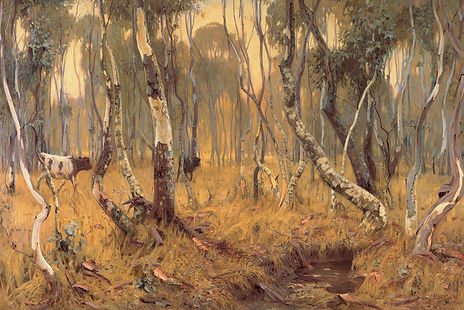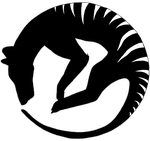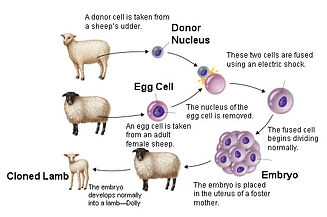

the thylacine project
Cloning - and how it could bring back the thylacine
How, in general terms, is cloning done?
Cloning, or somatic cell nuclear transfer (as its technical name suggests), is a process in which a DNA cell (most commonly a skin cell) is extracted from a "donor", such as an adult animal, and inserted into an empty egg cell from a "surrogate" animal, which will now read the information of the new cell. Next, electricity is used to zap the new embryo in order for it to multiply. This is contined until the cell becomes a collection of cells that form after an egg is fertilized, known as a blastocysta. This is then placed into the surrogate animal once more. The animal born from this process will be identical to the original donor from which its information was copied.
This process is practically identical to the process that would be used in order to clone the thylacine. However, being an extinct species, DNA cannot not be taken from a living specimen, and will instead have to be extracted from a preserved specimen of a dead thylacine pup, as mentioned below.

An example of the cloning process
What is the likely source of DNA for thylacines?
The likely source of DNA for a thylacine during the cloning process would be DNA extracted from the body of a thylacine pup specimen that has been preserved in ethanol since 1866. For this procedure of cloning to work, scientists will be required to extract DNA from the cells of the thylacine joey, insert this DNA into a cell membrane that has been created, transfer the cells into the egg of a surrogate animal, and allow this newly made cell to grow inside the womb of the host.
What are surrogates and which are likely surrogates to produce thylacines?
The term "surrogate", in this case, refers to an animal in cloning that is impregnated by a cloned cell created by DNA from a "donor" that will give birth to a replica of the donor. As the thylaicine exists in a family of its own, its only closest living relatives would be dasyurid marsupials, (referring to "dasyuridae": a family of marsupials native to Australia) such as the tasmanian devil or tiger quoll, even though an estimate of 25 million years separates these animals from the thylacine in terms of evolution.
What progress has been made so far towards cloning thylacines?
In the year 1999, a man named Professor Michael Archer, Director of the Australian Museum, proposed an idea to clone the thylacine. A plan was set in place to begin work on cloning and finally, the project's research team extracted the fragmented DNA from the internal organs of the thylacine pup that was preserved in alcohol, as mentioned before. Thylacine bones and teeth were also obtained from specimens in the museum, with the teeth sample proving to be more reliable as a a source of DNA than the tissue cells extracted from the thylacine pup. Through intensive researchuring the project team successfully copied a thylacine's genes using a process known as PCR (Polymerase Chain Reaction). However, even after such a breakthrough, the thylacine cloning project's funding was cut in 2005, and futher investigations and experiments in thylacine cloning ceased immediately.
What problems exist in terms of cloning thylacines?
After the death of an animal, enzymes cause DNA to quickly deteriorate, becoming almost completely unreliable after a number of years, and leaving information fragmented and difficult to use in cloning. This means, the genome existing in the preserved thylacine joey would be unusable on its own, as it would represent only a small portion of the genetic code as a whole. Another problem regarding the idea of cloning the thylacine is that there are no suitable surrogate mothers to be impregnated with the thylacine cell, as the dasyurid marsupials, such as tasmanian devils and tiger quolls, living in Australia today are only distantly related to the thylacine and are far too small to give birth to such a large animal in comparison.
What are the ethical issues involved in possibly cloning thylacines?
The problems with cloning over the years are the problems that arise after birth:
-
Many animals that have been cloned have been born with serious disabilities and possible organ failure, occuring during a problem in copying the DNA and creating the cells, often proving to be fatal in the long-run.
-
There is also large controversy among those who believe scientists are "playing God" by playing with genetics and cloning animals, because it is deemed "unnatural" and unethical to do so.